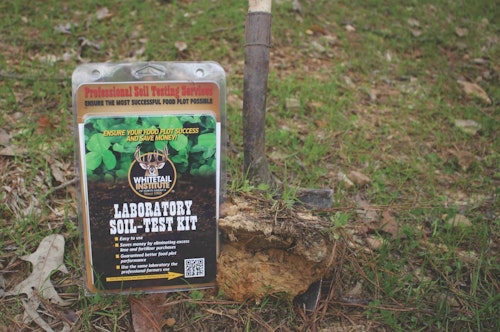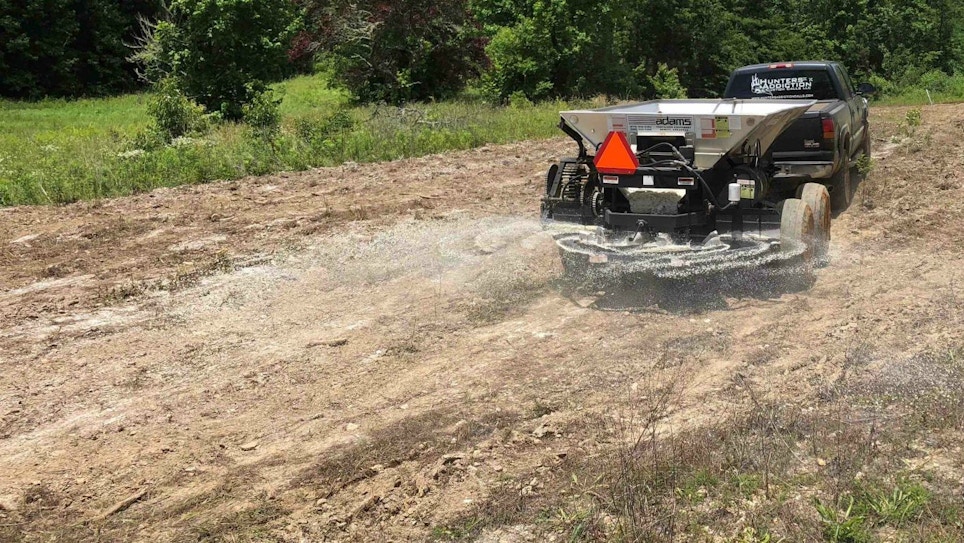Anyone who goes through the time and expense working the soil for whitetails wants to grow a lush food plot. So it only makes sense to spread fertilizer, right? Maybe.
The key to getting the most out of your fertilizer application is first having the pH correct in your food plot. And the only way to know the pH of your soil is by taking a soil sample and sending in your dirt for testing. Whitetail Institute and other food plot companies offer affordable soil test kits for DIY whitetail managers.

Most soils that haven’t been amended in the past will fall into the acidic range — a pH measurement of less than 7.0. The pH scale ranges from 0 to 14 (with 7 being neutral) and is a measure of acidity and alkalinity. Ironically, many food plot crops thrive around the neutral range.
So, what happens if you plant crops in an acidic soil? If your soil has a pH of 6.0, then about 20 percent of the fertilizer you put out is never used by the plant — it’s completely wasted. If your pH is 5.0, then you’ve wasted 50 percent of your fertilizer application. A pH level of 4.5 (which is a common measurement in the Southeast) will waste 70 percent of your fertilizer.
An easier way to interpret this; you waste 70, 50 or 20 percent of the money you paid for that expensive fertilizer. This is why it’s so important to get a soil test and follow the lime recommendations to amend your pH. A near-neutral soil will allow your plants to work more efficiently at nutrient uptake, putting that fertilizer to good use.
Why Plant High-Protein Food Plots
After you amend the pH of your soil, it’s time to decide what to plant. Here’s one important factor to consider.
Most of us dream about wrapping our hands around the antlers of a large buck that we just harvested. During hunting season when those antlers are bone hard, it’s hard to imagine that at one point they consisted of more protein than calcium and phosphorous. But it’s true.
Hardened antler is made up of nearly equal parts protein and minerals (mostly calcium and phosphorous). However, during the velvet stage when antlers are growing, they consist of 80-percent protein and the rest minerals.

If you’re interested in giving your deer everything they need to reach their genetic potential in antler size, high-quality protein forage such as soybeans is needed during the summer months. Planting crops high in protein is a cost-effective way to ensure your deer are getting enough protein during the antler-growing season.






